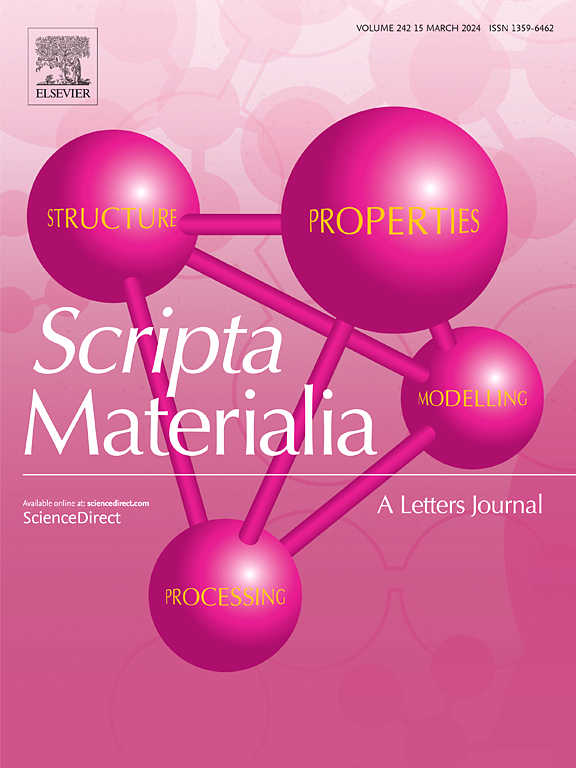In-situ TEM observation of -axis extension twin formation at grain boundaries
IF 5.3
2区 材料科学
Q2 MATERIALS SCIENCE, MULTIDISCIPLINARY
引用次数: 0
Abstract
Effect of grain boundaries on {} twin formation and its mechanical response in Mg is investigated through in-situ TEM compression test. Compression direction is set to be normal to the <c>-axis, which is a favorable orientation to form {} twins. In case of a single crystal, twins form in the vicinity of the contact region of compression-tip with the specimen, as reported in previous studies. On the contrary, when the specimen has a grain boundary, this interfacial defect becomes the nucleation/formation site for twins. Stress required to form the twins is lower than that in a single crystal. Grain boundaries, which have a role in prevention of dislocation slips, create high stress fields; as a result, they lead to nucleation of a twin embryo. While twin nucleation is a probabilistic event, stress required to form the twins shows size effect.

求助全文
约1分钟内获得全文
求助全文
来源期刊

Scripta Materialia
工程技术-材料科学:综合
CiteScore
11.40
自引率
5.00%
发文量
581
审稿时长
34 days
期刊介绍:
Scripta Materialia is a LETTERS journal of Acta Materialia, providing a forum for the rapid publication of short communications on the relationship between the structure and the properties of inorganic materials. The emphasis is on originality rather than incremental research. Short reports on the development of materials with novel or substantially improved properties are also welcomed. Emphasis is on either the functional or mechanical behavior of metals, ceramics and semiconductors at all length scales.
 求助内容:
求助内容: 应助结果提醒方式:
应助结果提醒方式:


